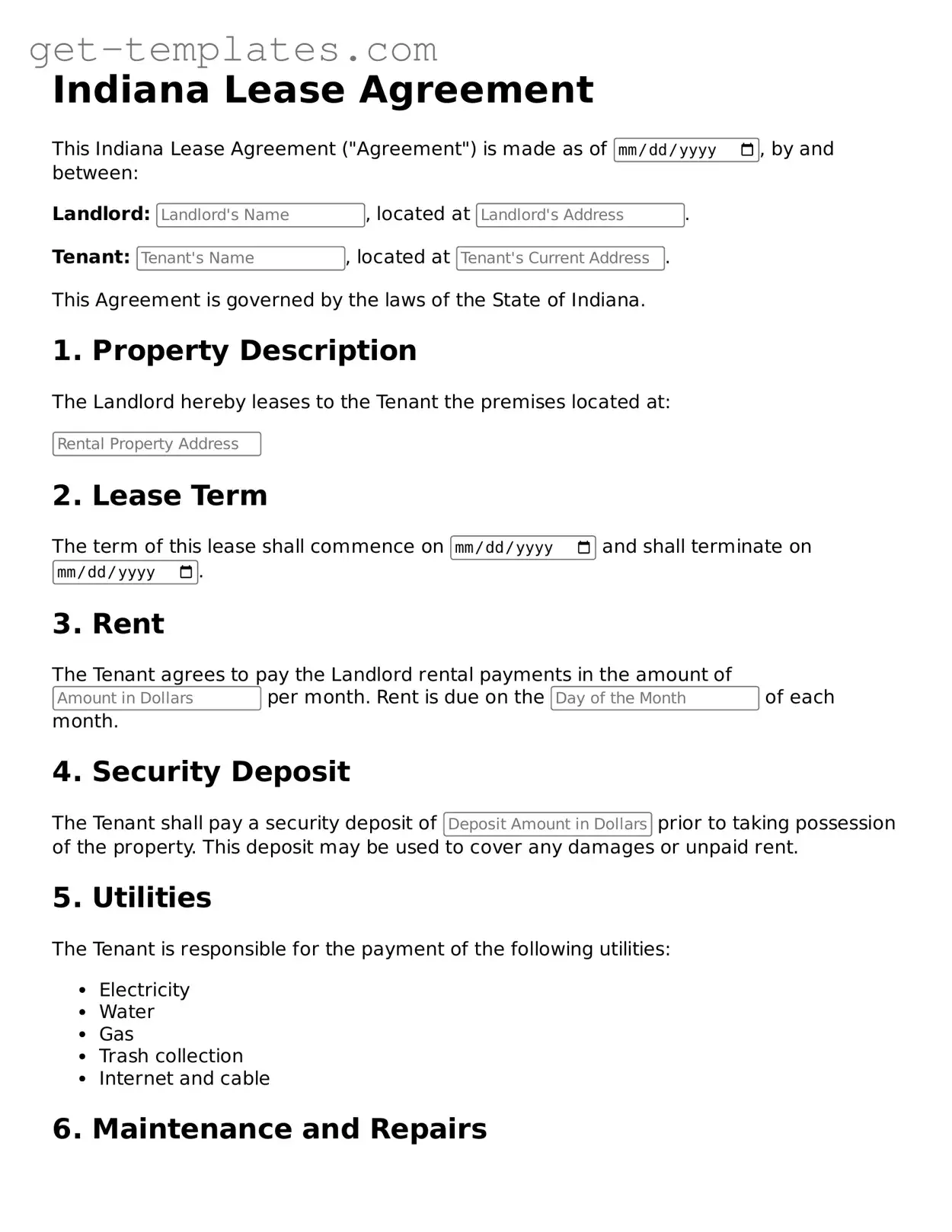Attorney-Approved Lease Agreement Document for Indiana
The Indiana Lease Agreement form is a legal document that outlines the terms and conditions between a landlord and tenant for renting residential or commercial property in Indiana. This form serves to protect the rights of both parties while clearly defining their responsibilities. Understanding this agreement is essential for anyone involved in a rental situation in the state.
Get Document Online
